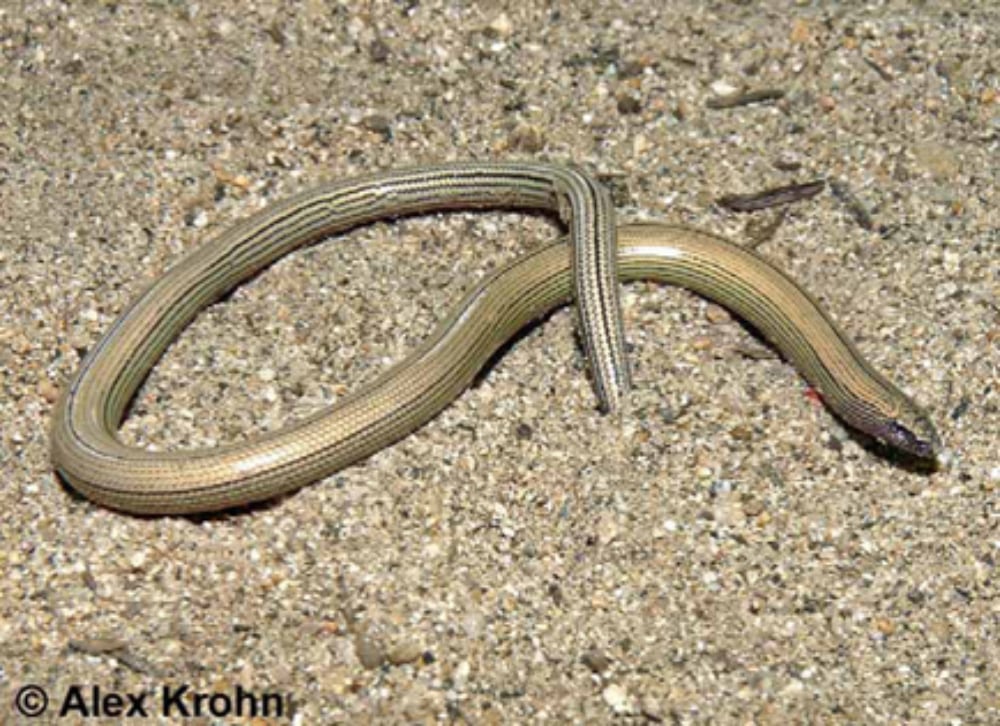The Temblor legless lizard is 4 to 7 inches in length from snout to vent with smooth shiny scales and a blunt tail.
The California Department of Fish and Wildlife has recommended that the Temblor legless lizard (Anniella alexanderae) be protected under the state’s Endangered Species Act.
The legless lizard spends much of its time swimming in sand. It is threatened by oil and gas development as well as climate change, invasive species, habitat loss and large scale solar projects.
The lizard is only found in the state’s Kern and Fresno counties in the San Joaquin Valley, in only five known sites within those counties. Four of those sites in which the lizard lives are within oilfield boundaries that are surrounded by oil and gas development, according to a statement put out by the Center for Biological Diversity.
Temblor Legless Lizard Should Be Protected, Conservation Group Says
The lizard is mostly an underground dweller except when it surfaces to feed on insects. The reptile thrives in loose and moist soil for burrowing and needs a layer of leaf litter to evade predators as well as to feed on the insects in the leaf litter.
Temblor Legless Lizard Information
The Temblor legless lizard is 4 to 7 inches in length from snout to vent with smooth shiny scales and a blunt tail. The reptile has no external ear openings. Temblor legless lizards have a mid dorsal black stripe, and a pale olive dorsum with orange sides. It sports lateral black stripes near its eyes to the top of its tail. It is ovoviviparous, and gives birth to live young after the eggs are hatched within the body.


